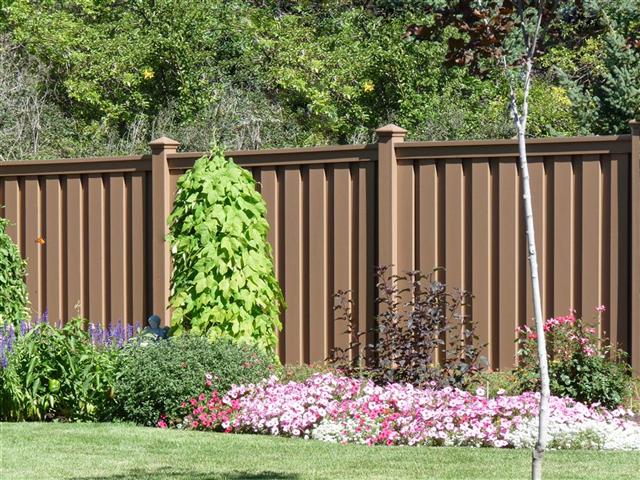All Categories
Featured

When installing a fencing, choosing the right product is key to stabilizing capability, looks, and budget. Wood, vinyl, and light weight aluminum are among one of the most generally selected fencing products, each with its strengths and drawbacks. This overview discovers the pros and disadvantages of these choices to help you make an educated choice.

Timber Secure Fencing. Pros:. All-natural Beauty: Timber's ageless appeal can improve any type of residential property with its warm and classic appearance. Customizable: You can paint, discolor, or carve wood to fit your style preferences. Economical: Wood secure fencing is initially much more affordable contrasted to some various other materials. Eco-friendly: As a sustainable resource, timber is eco-friendly and usually taken into consideration environmentally friendly. Cons:. Maintenance-Intensive: Routine securing, paint, or discoloration is required to prevent damages from weather condition and bugs. Prone to Decay: Without proper care, timber can rot, warp, or crack gradually. Much shorter Life-span: On standard, wood fencings last 10-15 years, relying on the sort of wood and upkeep. Timber is a wonderful option for those who value aesthetics and want to buy regular maintenance to maintain its appearance and sturdiness.
Plastic Fence. Pros:. Low Upkeep: Plastic requires marginal care-- simply periodic cleansing with soap and water. Weather Resistant: It doesn't warp, rot, or surrender to insect damage, making it highly resilient in various environments. Long life: Plastic fencings can last 20-30 years with little to no repair work. Style Range: Available in a variety of styles, structures, and shades, including wood-like appearances. Disadvantages:. Higher Initial Price: Vinyl fencings are extra costly upfront compared to timber. Susceptability to Cold: In incredibly cold weather condition, vinyl can become vulnerable and weak to cracking. Minimal Fixing Options: Matching substitute panels can be testing if damages occurs. Plastic fencing is perfect for property owners trying to find a lasting, low-maintenance service that provides modern flexibility.

Light Weight Aluminum Fencing. Pros:. Rust-Proof: Aluminum resists deterioration, making it an exceptional selection for damp or moist atmospheres. Long lasting: Despite being lightweight, light weight aluminum is solid and can hold up against harsh climate condition. Reduced Upkeep: It needs marginal upkeep, generally only occasional cleansing. Long Life-span: Aluminum fences can last years without significant wear and tear. Stylish Style: Often made use of for decorative functions, light weight aluminum secure fencing includes a sleek, innovative appearance to residential or commercial properties. Cons:. High Initial Investment: Aluminum fences are amongst the more expensive alternatives on the market. Less Personal privacy: The open designs common with aluminum fence don't give much personal privacy. Vulnerable to Damages: While resilient, aluminum can damage if hit with sufficient force. Light weight aluminum is a superb choice for home owners prioritizing visual appeals and sturdiness without needing much maintenance.
Making Your Choice. When determining between vinyl, wood, or light weight aluminum secure fencing, consider your priorities:
Timber fits those who value an all-natural appearance and do not mind placing in upkeep initiative. Plastic is the most effective alternative for those looking for a low-maintenance, weather-resistant remedy. Aluminum provides streamlined style and long-lasting resilience however may lack privacy. By thoroughly analyzing these products' attributes, you can choose a fencing that enhances your residential or commercial property while satisfying your visual and functional needs.
Latest Posts
Find Out the Montclare Advantage - Trusted Auto Repair
Published Apr 19, 25
2 min read
Full Circle Strategic Marketing - Expand Sales Opportunities with Targeted Marketing Solutions
Published Apr 19, 25
2 min read
Save Big with Montclare Auto Repair Offers - Available for a Short Time!
Published Apr 18, 25
2 min read
More
Latest Posts
Find Out the Montclare Advantage - Trusted Auto Repair
Published Apr 19, 25
2 min read
Full Circle Strategic Marketing - Expand Sales Opportunities with Targeted Marketing Solutions
Published Apr 19, 25
2 min read
Save Big with Montclare Auto Repair Offers - Available for a Short Time!
Published Apr 18, 25
2 min read